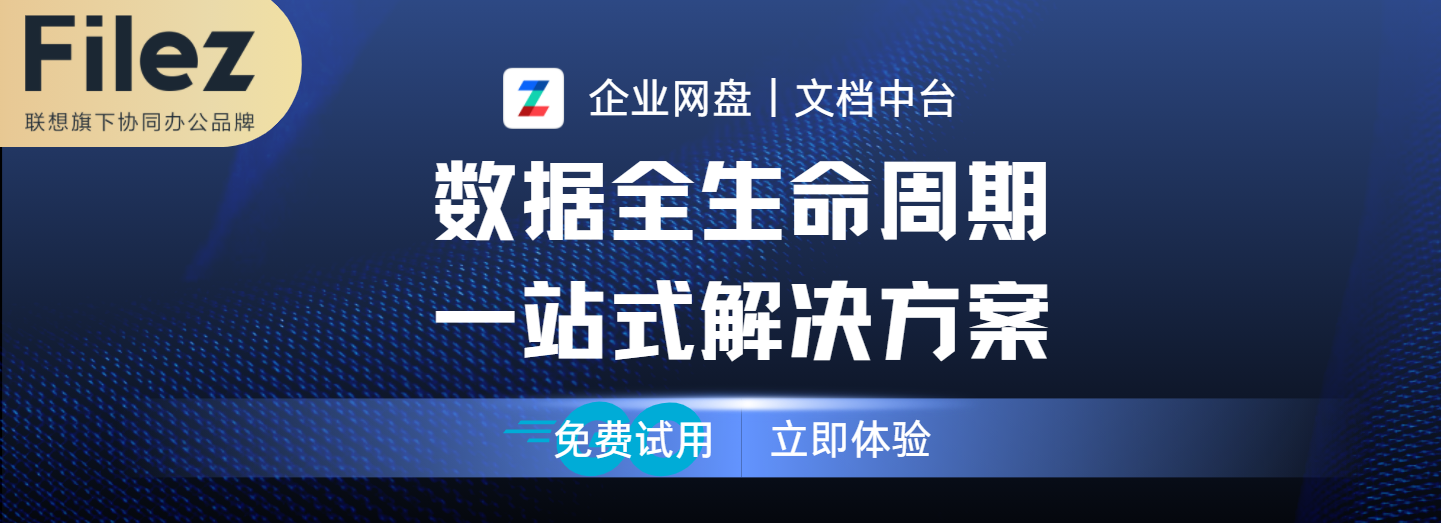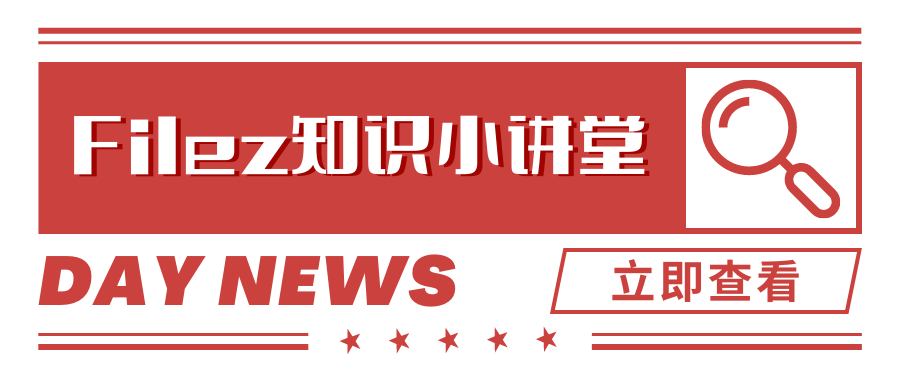
中国企业如何安全合规的实现文件跨国传输
发布日期: 2023-04-25
在全球化的背景下,文件的跨国传输已经成为了企业之间日常合作的必要手段。对于中国企业来说,如何实现文件的跨国传输,并且保证传输的效率与安全,是一个非常重要的问题。本文将从政策管理、技术手段、安全保障等方面,为大家详细介绍如何实现文件的跨国传输。
一、政策管理
在中国,文件的跨国传输需要遵守相关的政策管理要求。具体来说,涉及到以下几个方面:
1. 数据出境管理
根据《中华人民共和国网络安全法》,网络运营者应当采取技术措施和其他必要措施,保护网络安全,防止网络安全事件的发生。其中,涉及到个人信息和重要数据的出境传输,需要经过相关部门的审核批准。因此,在进行文件的跨国传输时,需要提前了解相关政策要求,并严格遵守。
2. 云计算服务管理
随着云计算技术的发展,越来越多的企业选择将数据存储在云端。在进行文件的跨国传输时,需要选择符合中国法律法规要求的云计算服务提供商,并签订相关的服务协议。同时,企业需要对云端数据进行备份和加密,以保证数据的安全性。
3. 知识产权保护
在进行文件的跨国传输时,需要注意知识产权的保护。企业需要对传输的文件进行版权和商标等知识产权的审查,确保不侵犯他人的合法权益。同时,在签订合同时,需要明确双方对于知识产权的权利和义务。
二、技术手段
除了政策管理外,技术手段也是实现文件跨国传输的重要保障。下面,我们将介绍几种常用的技术手段:
1. VPN
VPN是一种虚拟专用网络,通过加密通道将数据传输到目标地点。在进行文件的跨国传输时,可以使用VPN进行加密传输,以保证数据的安全性。同时,VPN还可以解决网络封锁等问题,提高传输效率。
根据《中华人民共和国网络安全法》,企业和个人在使用VPN时需要注意遵守政府的相关规定,并选择由政府认证的VPN服务提供商。在使用VPN时,还需要注意保护自己的身份和隐私,避免泄露敏感信息。
2. 企业云盘
企业云盘以联想zBox为例
联想zBox是一款跨国传输解决方案,这一解决方案的实现离不开联想公司在技术领域的深厚积累和全球化的布局,它能够帮助企业实现全球范围内的数据传输。
联想zBox的跨国传输功能主要依赖于以下三个方面:
一、全球化的数据中心
联想公司在全球范围内拥有多个数据中心,这些数据中心都配备了高效的网络设备和强大的计算资源。这些数据中心之间通过高速网络互联,形成了一个全球化的数据传输网络。企业可以将数据存储在任意一个数据中心,通过联想zBox实现跨国传输。
二、先进的数据加密技术
为了保障数据传输的安全性,联想zBox采用了先进的数据加密技术。它能够对数据进行多重加密,并在传输过程中进行安全验证,确保数据不被窃取或篡改。这一技术能够满足企业对数据安全性的高要求。
三、智能化的传输管理系统
联想zBox还配备了智能化的传输管理系统,它能够根据企业的需求自动选择最优的传输路径和传输方式。这一系统能够根据数据量、传输距离、网络带宽等多种因素进行智能判断,从而实现最快速、最稳定的数据传输。
3. P2P通信
P2P是一种点对点传输技术,可以实现文件的快速传输。在使用P2P传输文件时,文件会被分成多个部分,同时传输到多个目标地点。由于P2P可以充分利用网络带宽,因此传输效率非常高。
P2P网络最早应用于文件共享领域,如著名的BitTorrent协议。随着技术的不断发展,P2P网络已经被广泛应用于在线视频、音乐、游戏等领域。
P2P网络是一种去中心化的计算机网络通信模式,具有节约带宽、私密性等优点。但是也存在安全性、稳定性、法律问题等劣势。在实际应用中,需要根据具体情况遵守法律选择合适的通信模式。
三、安全保障
在进行文件的跨国传输时,安全保障是非常重要的。下面,我们将介绍几种常用的安全保障措施:
1. 数据加密
在进行文件的跨国传输时,可以使用数据加密技术保护数据的安全性。常用的加密算法包括AES、DES等。同时,企业还需要对加密密钥进行保护,防止密钥泄露导致数据被窃取。
2. 防火墙
防火墙是一种网络安全设备,可以监控网络流量,并阻止非法访问。在进行文件的跨国传输时,可以使用防火墙对网络流量进行监控和过滤,以保证数据的安全性。
3. 权限管理
在进行文件的跨国传输时,需要对文件进行权限管理。只有被授权的用户才能访问和修改文件。同时,企业还需要对用户的访问行为进行审计和监控,及时发现异常行为。
总结:
在全球化的背景下,文件的跨国传输已经成为了企业之间日常合作的必要手段。在进行文件的跨国传输时,需要遵守相关的政策管理要求,并采取适当的技术手段和安全保障措施,以保证数据的安全性和传输效率。希望本文对大家有所帮助。
In the context of globalization, the cross-border transfer of documents has become a necessary means of daily cooperation between enterprises. For Chinese enterprises, how to realize the cross-border transmission of documents and ensure the efficiency and security of transmission is a very important issue. This article will introduce in detail how to realize the cross-border transmission of files from the aspects of policy management, technical means, and security guarantees.
1. Policy management
In China, the international transfer of documents is subject to relevant policy management requirements. Specifically, the following aspects are involved:
1. Data export management
According to the Cybersecurity Law of the People's Republic of China, network operators shall employ technical measures and other necessary measures to protect network security and prevent the occurrence of network security incidents. Among them, the export and transmission of personal information and important data involves the review and approval of relevant departments. Therefore, when transferring documents across borders, it is necessary to understand the relevant policy requirements in advance and strictly adhere to them.
2. Cloud computing service management
With the development of cloud computing technology, more and more enterprises choose to store data in the cloud. When transferring files across borders, it is necessary to select a cloud computing service provider that meets the requirements of Chinese laws and regulations and sign relevant service agreements. At the same time, enterprises need to back up and encrypt data in the cloud to ensure the security of data.
3. Intellectual Property Protection
When transferring documents across borders, attention needs to be paid to the protection of intellectual property rights. Enterprises need to review the transmitted files for intellectual property rights such as copyrights and trademarks to ensure that they do not infringe the legitimate rights and interests of others. At the same time, when signing a contract, it is necessary to clarify the rights and obligations of both parties to intellectual property rights.
2. Technical means
In addition to policy management, technical means are also an important guarantee for the cross-border transmission of documents. Below, we will introduce several commonly used technical means:
1. VPN
A VPN is a virtual private network that transmits data to a destination location over an encrypted tunnel. When transferring files across borders, you can use a VPN for encrypted transmission to guarantee the security of your data. At the same time, VPN can also solve problems such as network blocking and improve transmission efficiency.
According to the Cybersecurity Law of the People's Republic of China, enterprises and individuals need to pay attention to complying with relevant government regulations when using VPNs and choose VPN service providers certified by the government. When using a VPN, you also need to take care to protect your identity and privacy and avoid leaking sensitive information.
2. Enterprise cloud disk
Enterprise cloud disk takes Lenovo zBox as an example
Lenovo zBox is a multinational transmission solution, the realization of this solution is inseparable from Lenovo's deep accumulation in the field of technology and global layout, which can help enterprises achieve global data transmission.
Lenovo zBox's cross-border transmission function mainly relies on the following three aspects:
1. Global data centers
Lenovo has multiple data centers around the world, all of which are equipped with efficient network equipment and powerful computing resources. These data centers are interconnected by high-speed networks, forming a global data transmission network. Enterprises can store data in any data center and transfer it internationally through Lenovo zBox.
2. Advanced data encryption technology
In order to ensure the security of data transmission, Lenovo zBox adopts advanced data encryption technology. It is capable of multi-layered encryption of data and security verification during transmission to ensure that data cannot be stolen or tampered with. This technology meets the high requirements of enterprises for data security.
3. Intelligent transmission management system
Lenovo zBox is also equipped with an intelligent transmission management system, which can automatically select the optimal transmission path and transmission method according to the needs of enterprises. This system can make intelligent judgments based on various factors such as data volume, transmission distance, network bandwidth, etc., so as to achieve the fastest and most stable data transmission.
3. P2P communication
P2P is a peer-to-peer transfer technology that enables fast transfer of files. When using P2P to transfer files, the files are split into multiple parts and transferred to multiple destinations at the same time. Since P2P can make full use of network bandwidth, the transmission efficiency is very high.
P2P networks were first used in the field of file sharing, such as the famous BitTorrent protocol. With the continuous development of technology, P2P networks have been widely used in online video, music, games and other fields.
P2P network is a decentralized computer network communication mode, which has the advantages of saving bandwidth and privacy. However, there are also disadvantages such as security, stability, and legal issues. In practice, it is necessary to choose the appropriate communication mode according to the specific situation and comply with the law.
3. Security guarantees
Security is very important when transferring files internationally. Below, we'll look at a few common security measures:
1. Data encryption
When transferring files across borders, data encryption technology can be used to protect the security of the data. Commonly used encryption algorithms include AES, DES, etc. At the same time, enterprises also need to protect encryption keys to prevent data theft caused by key leakage.
2. Firewall
A firewall is a network security appliance that monitors network traffic and blocks illegal access. When transferring files across borders, you can use firewalls to monitor and filter network traffic to keep your data secure.
3. Rights Management
When transferring files across borders, you need to manage the permissions of the files. Only authorized users can access and modify files. At the same time, enterprises also need to audit and monitor users' access behaviors to detect abnormal behaviors in a timely manner.
Summary:
In the context of globalization, the cross-border transfer of documents has become a necessary means of daily cooperation between enterprises. When transferring documents across borders, it is necessary to comply with relevant policy management requirements, and take appropriate technical means and security measures to ensure data security and transmission efficiency. I hope this article is helpful to everyone.
 热门推荐
热门推荐
-
 信创国产化文件管理系统—让企业文件更加安全可控 2023-05-19
信创国产化文件管理系统—让企业文件更加安全可控 2023-05-19 -
 【联想zOffice】多人实时协同创作 2023-04-10
【联想zOffice】多人实时协同创作 2023-04-10 -
 联想Filez全链智能文件协同助力制造业智慧运营 2023-03-30
联想Filez全链智能文件协同助力制造业智慧运营 2023-03-30 -
 携手共进 | 全力支援企业异地协同办公 2022-04-20
携手共进 | 全力支援企业异地协同办公 2022-04-20 -
 联想企业网盘中标中国外运股份企业网盘项目 2022-04-20
联想企业网盘中标中国外运股份企业网盘项目 2022-04-20 -
 联想Filez携手厦门航空,让效率与安全在云端腾飞 2022-04-20
联想Filez携手厦门航空,让效率与安全在云端腾飞 2022-04-20 -
 企业办公用如何选择企业网盘? 2022-04-22
企业办公用如何选择企业网盘? 2022-04-22 -
 联想企业网盘实用小功能 2022-04-22
联想企业网盘实用小功能 2022-04-22 -
 联想Filez同步盘功能 资料自动同步双向备份 2022-04-22
联想Filez同步盘功能 资料自动同步双向备份 2022-04-22 -
 联想Filez如何实海外文件极速传输? 2022-04-22
联想Filez如何实海外文件极速传输? 2022-04-22
